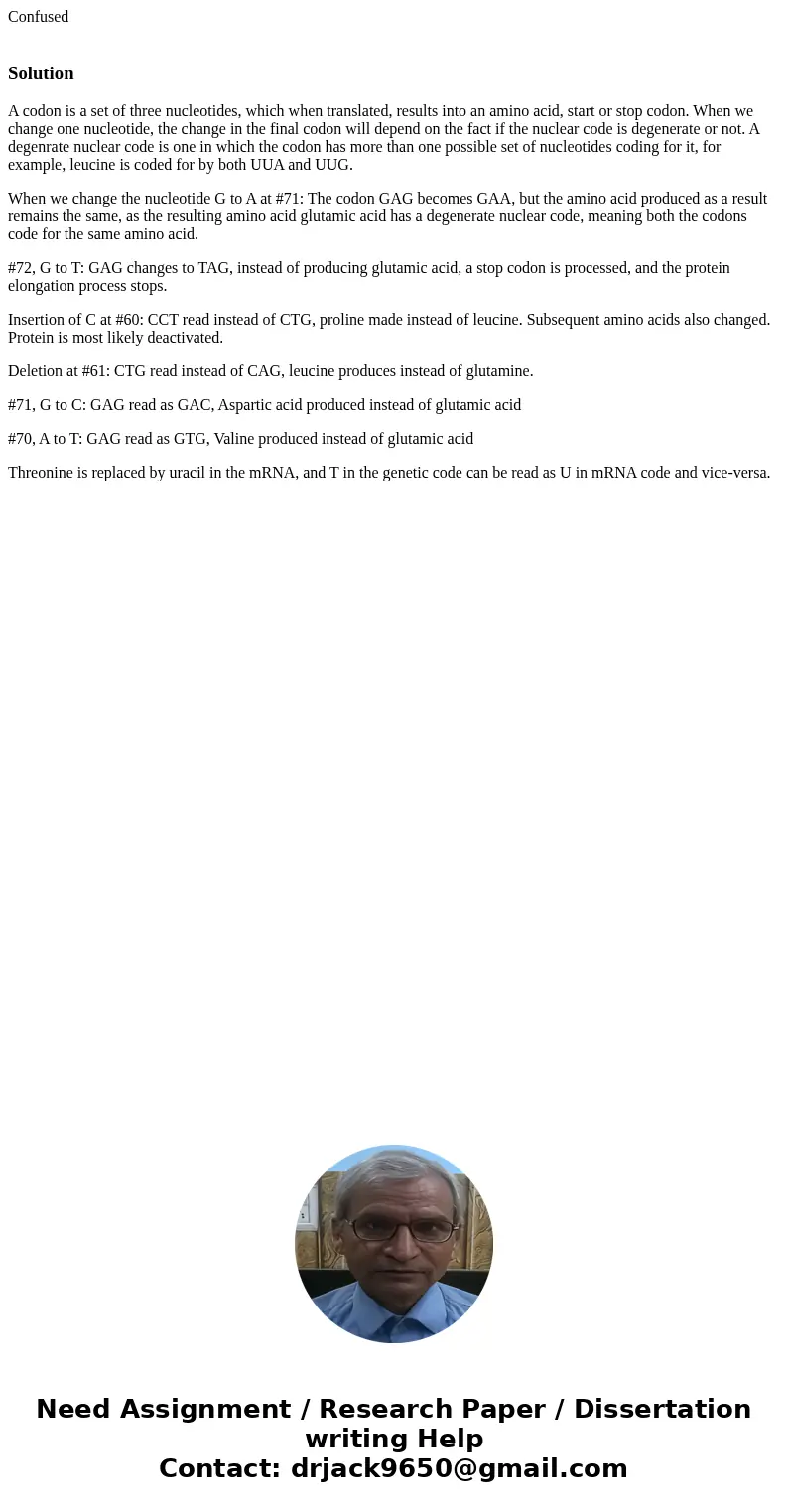Confused SolutionA codon is a set of three nucleotides which
Solution
A codon is a set of three nucleotides, which when translated, results into an amino acid, start or stop codon. When we change one nucleotide, the change in the final codon will depend on the fact if the nuclear code is degenerate or not. A degenrate nuclear code is one in which the codon has more than one possible set of nucleotides coding for it, for example, leucine is coded for by both UUA and UUG.
When we change the nucleotide G to A at #71: The codon GAG becomes GAA, but the amino acid produced as a result remains the same, as the resulting amino acid glutamic acid has a degenerate nuclear code, meaning both the codons code for the same amino acid.
#72, G to T: GAG changes to TAG, instead of producing glutamic acid, a stop codon is processed, and the protein elongation process stops.
Insertion of C at #60: CCT read instead of CTG, proline made instead of leucine. Subsequent amino acids also changed. Protein is most likely deactivated.
Deletion at #61: CTG read instead of CAG, leucine produces instead of glutamine.
#71, G to C: GAG read as GAC, Aspartic acid produced instead of glutamic acid
#70, A to T: GAG read as GTG, Valine produced instead of glutamic acid
Threonine is replaced by uracil in the mRNA, and T in the genetic code can be read as U in mRNA code and vice-versa.

 Homework Sourse
Homework Sourse